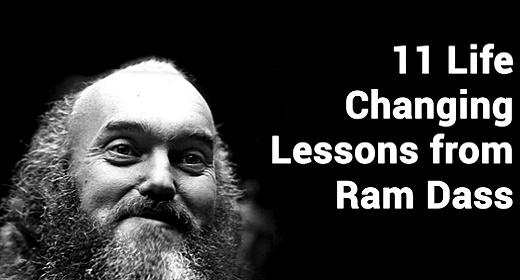by Kino MacGregor: In this excerpt from her new book, The Yogi Assignment, Ashtanga teacher Kino MacGregor opens up about how a community of yoga friends helped get her on a better path…

My life before yoga consisted of all-night parties, dance music, and generally being too fabulous for my own good. I had a lot of high heels and makeup paired with plenty of attitude and ego. I never thought I would give all that up for early-morning yoga practice. A life-changing moment happened one day when I was in an elevator going to an after-hours party on an average Monday morning. A man in his mid-50s was reminiscing about the party scene of the 1980s, which were filled with cocaine and heroin. It hit me like an epiphany that endless raves would only lead me to be like him. I would either be in my mid-50s holding on to the almost glorious party days of the ecstasy generation, or I would have to do something “real” with my life.
Recognizing “Spiritual Desperation”
It was another year before I took any real action, but I slowly started to see that my hunger for sleepless nights spent on the dance floor, fueled by chemical substances, was a kind of spiritual desperation. I had been struggling with my own sadness since I was nine years old. I was miserable, and I never had the tools to face my own misery. When I first took ecstasy, it was like a kind of happiness that I had never felt in my life. So I did more and more of it in a mad dash to self-medicate the then-undiagnosed depression from which I had been suffering for most of my life. There are many problems with self-medicating a psychiatric disorder using a controlled illegal substance, starting with the most obvious that reliance on drugs creates an addictive cycle that can wreck your whole life. On the quest for a bigger high, I was on the road to self-destruction. It was an endless train that I may not have gotten off if I had not met that man in the elevator. I guess that in some ways I owe him a debt of gratitude.
The seed of change was planted in my heart. I wanted to live a more peaceful life. I wanted to be genuinely nice and let go of my self-importance and sense of entitlement. I made a series of decisions to get my life back on track. But it all began with the decision that I was worth it, that my life was worth saving, and that I had value as a human being. I took the GREs, applied to graduate school at New York University, and joined an Ashtanga Yoga class. I was overwhelmed during my first yoga class. Not only was everyone nice, but I felt something completely new. Lying in the final relaxation at the end of class, I felt comfortable in my own skin. The discomfort I had known my whole life, like a discordant tune of angst playing in the background of every situation I had ever experienced, was finally gone. I knew that this was the real “high.”
Switching Paths and Finding a Sangha
The first casualties of my new lifestyle were my party friends. While I knew that this new path was the right one for me, I felt like I was walking a solitary journey. Within a few months of that first yoga class, I moved to New York City and joined a traditional Ashtanga Yoga Mysore Style class. The teacher told me to come six days a week at eight in the morning. My world literally turned on its axis; 8:00 a.m. was when I used to arrive at the best, most exclusive after-parties! Committing myself to yoga meant changing my life in ways that I wanted but was not truly prepared for. Not only did I move away from Miami and immerse myself in an intensive graduate studies program, but suddenly I was going to bed before midnight and doing yoga at what felt like the crack of dawn. If it were not for the welcoming community of Ashtangis in New York, I do not think I would have been able to stick with the spiritual path. I needed a sangha, a spiritual community to guide my transition to the yoga life.
When I finished my first practice in New York, there were women in the changing room who invited me out for juice. When I didn’t show up on a Sunday for practice because some party friends visited me in New York, everyone noticed I was not there. When I saw that all the yogis drank green juices and brought healthy snacks, I questioned my diet. When two students from my class went to India to study with Sri K. Pattabhi Jois, I asked my teacher about it, and he encouraged me to read Guruji’s book and go to India. My life changed; not only did I find my sangha, but I found my life’s path. Without the genuine support of the yoga community, I would not have made it.
Discovering the Importance of Yoga Friends
It is so important to have a sangha—spiritual community or yoga friends—friends who understand and support your practice, who will applaud you for getting up at 5:00 a.m. and dragging yourself to practice. Yoga friends are happy to celebrate and lift their glasses to cheer with green juice and a handstand instead of wine and cigarettes. You need someone to commiserate with about your failed headstand and to celebrate your first backbend. It can be hard for people who do not practice to understand why you are nearly in tears just because you balanced on your head for a few seconds today.
But the yoga community is not heaven, so don’t come to it looking for angels. The yoga world is made up of human beings. I do not want to paint a rosy view of a world that still has gossip, scandal, power, fame, and money in it. Yogis, however, are held to a higher standard. As a yoga practitioner, you must ask yourself what it means to live the yoga life. More than anything, yoga is a commitment to live a peaceful life and to change your world. It takes strength, steadiness, and determination.
The spiritual path is not a competition where fellow yogis duke it out for the top spot. It is a journey on which we reach out and lift each other up. We are not here to glorify ourselves but to chip away at the chains of ego, pride, and jealousy. We are here to be humble, to be kind, to learn how to take the higher road, to drop the fighting and forcing, and to end the emotional warfare that only engenders more conflict. There is no uniform, no particular outfit, no size, shape, age, gender, ethnicity, or social class that makes you a yogi. It is what is in your heart. When you are in alignment, your heart sings with joy. When you take action that is out of alignment, your heart registers this lack of integrity. As a yogi, when you feel this irresolution, take action to right the wrong. Be a good yoga friend. Be strong, be peaceful, be a yogi.

5 Ways to Celebrate Sangha
1. Identify your yoga friends.
Reach out to them today and invite them to share a practice, a juice, or a vegan meal. Practice together, join an acro-yoga class, or help each other with partner work to build a sense of shared trust.
I dedicate this assignment to my two best yoga friends. The first is my husband, Tim. Throughout our marriage, we have shared multiple trips to India, the heart and spirit of the practice, and we opened a yoga center together in Miami. We share love and life. The second is Kerri Verna, who many people know as @beachyogagirl on Instagram. Truly, she’s my best friend, and I would not be able to walk this path without her. Who are your yoga friends?
2. Find your yoga values.
Identify three core values that you think define the yoga sangha. For example, they could be peace, strength, and authenticity. Then open the dialogue with your community of yoga friends and find out what shared values you embrace.
3. Be a yoga friend.
Next time you go to class, look for the newbies and welcome them into the community by inviting them for a juice or just letting them know that you are there for them. Or find people online who are new to the practice. Follow their accounts on Instagram, and offer kind words of encouragement while letting them know that they have a friend on the yoga path.
4. Form a virtual sangha.
Join a social media group that shares your values. Share your story honestly and provide sustenance for the journey through friendship and support.
5. Join a yoga sangha.
Go to class—an actual, physical class—and meet a local teacher and community of yogis.
Kino MacGregor is one of only 14 people—and the youngest woman—in the United States to receive certification to teach Ashtanga Yoga from its founder Sri K. Pattabhi Jois. MacGregor and her husband, Tim Feldmann, are the founders of the Miami Life Center, where they teach daily classes, workshops, and intensives together. Her latest book, The Yogi Assignment, comes out from Shambhala Publications on September 26.









































